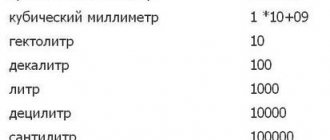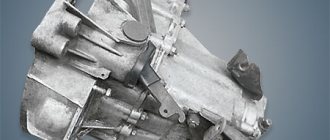Propane-butane is a liquefied petroleum gas. The substance itself is obtained from condensed petroleum associated gases and oil itself. To ensure that the resulting mixture remains in a liquid state, it is stored and transported under special pressure. The process of refueling with propane is not much different from simple refueling with gasoline.
In our country, the use of propane-butane is growing at a rapid pace. In many cases, this is due to the advantage of this substance as a fuel over gasoline. For example, for cars, installing propane-butane gas equipment means using environmentally friendly fuel with a high octane number and high performance properties at a price of 50% of the price of gasoline. The last factor is especially relevant, since the production of propane-butane is cheaper than gasoline.
When working with this material, it is extremely important to know about its quality. This characteristic can be clearly understood by such a parameter as the specific gravity of propane butane.
Specific Gravity Calculations
In order to carry out calculations correctly, it is necessary to define the concept itself.
Specific gravity is the ratio of the weight of a material or substance to its volume. All calculations are carried out according to the formula: y=p*g, where y is specific gravity, p is density, g is gravitational acceleration, which in normal cases is a constant and equals 9.81 m/s*s. The result is measured in Newtons divided by cubic meter (N/m3). In order to convert the value to the SI system, it must be multiplied by 0.102.
Density is the quantitative value of mass in kilograms placed in a cubic meter. A very ambiguous value and depends on many factors. The main one is temperature. So, the density of propane-butane can vary from 490 to 619 kg/m3.
How many cubic meters of gas are in a 50 liter cylinder?
Technical gases in 50 liter cylinders
Technical gases (for more details see here https://www.nvph.ru/texnicheskie-gazyi) are special substances obtained from the atmosphere, during a chemical reaction, as well as from hydrocarbon raw materials. Technical gases are used for industrial and domestic purposes, as well as when performing welding and other construction work.
Types of technical gases
There are many types of technical gases obtained by any of the above methods. Among the main ones we can highlight the following:
- Oxygen.
Nitrogen.
Argon.
Carbon dioxide.
Helium.
Propane.
Acetylene.
The gases oxygen, nitrogen, carbon dioxide and argon are obtained by dividing air into two components - oxygen and nitrogen, for this purpose special devices and apparatus are used - air separators.
Helium is obtained by extracting helium-containing natural gases, propane https://www.nvph.ru/Propan-gaz is produced during the extraction of carbon raw materials. By a chemical method, acetylene is produced by adding water and calcium carbide through a chemical reaction.
In addition to the main types of technical gases, one can also distinguish medical gases, which are actively used in the operation of many devices, as well as in some therapeutic and resuscitation procedures. An example of such a substance is medical oxygen.
In addition, in modern industry, gas mixtures that consist of several gas components are very often used. The use of such a mixture helps to significantly improve the result of work. Welding gas mixtures are in particular demand, which include protective gas mixtures, the main components of which are argon and carbon dioxide, as well as test gas mixtures used in metrology, created on the basis of pure technical gas.
When does a gas turn into a liquid?
To evaporate any liquid, heat must be supplied to it (it is called the heat of evaporation). The evaporation of liquid nitrogen, liquid hydrogen or liquid helium occurs at low temperatures. By evaporating liquid helium in a vacuum, it is possible to obtain a temperature only 0.7 K above absolute zero. ...
Interesting materials:
What is the most delicious beer in Belarus? What generation of Intel processors? What field exists around moving electric charges? Which hemisphere of the brain is more developed in left-handed people? What kind of government is there in Canada? What nickname did Alexander Sergeevich have at the Tsarskoye Selo Lyceum near St. Petersburg? What is the distance between Anapa and Sochi? What is the distance from Odessa to Turkey across the sea? What decision can the appellate court make? What's the safest place?
How to convert cubic meters to liters and vice versa: examples of calculations
Example 1. The packaging of plastic garbage bags indicates that their volume is 30 liters. What is the capacity of such a package in cubic meters?
Simple solution : 30/1000 = 0.03. The volume of the package is 0.03 (three hundredths) cubic meters.
Step by step, this solution can be described as follows: 30 liters = 30 dm^3 = 30 X 0.1 m^3 = 30 X 0.001 m^3 = 0.03 m^3.
Example 2. According to statistics, on average in Russia one person uses 6 cubic meters of water per month. How many liters of water will an “average” family of three use per day, if we assume that there are 30 days in a month?
Calculation option: A family of 3 people will use 6 X 3 = 18 cubic meters of water per month. Let's convert cubic meters into liters, multiply by 1000 - and we end up with 18,000 liters per month. Divide by the number of days in a month: 18,000 / 30 = 600. As a result, it turns out that the daily water consumption for the family as a whole will be 600 liters.
Example 3 . The size of the bowl of the children's inflatable pool is 2 x 3 meters, the depth of the pool is 1 meter. How long will it take to fill it to the brim if water flows into it at a rate of 30 liters per minute?
Calculation option: Let's calculate the capacity of the pool in cubic meters. 2 m X 3 m X 1 m = 6 m^3. Let's convert to liters: 6 X 1000 = 6,000 liters. It remains to divide the volume in liters by the amount of water flowing per minute: 6,000 / 30 = 200 minutes. Thus, the pool will fill in 200 minutes (3 hours 20 minutes).
The number of liters contained in a cubic meter of gas is not as simple a question as it might seem at first glance, given the peculiarities of using gas fuel. Let's consider ways to convert the volume of gases used as fuel, taking into account their characteristics.
Gas cylinder color
Rules PB 03-576-03 state that the outer surface of vessels intended for transporting gases must be painted in the appropriate color. It depends on the type of gas that will be filled.
Red cylinders are provided for butane and other flammable gases. Moreover, for some gases not only a color is provided, but also a corresponding color stripe.
Inscriptions and stripes are applied with durable paints and if they are erased during use, then re-application occurs at filling stations or testing points. That's why gas cylinders always give away their contents.
In addition, the standards establish an identifying inscription that should be applied to the vessel. The word “Butane” must be printed on the butane cylinder, and “Propane” on the propane cylinder. The text color of the inscription on a vessel with hydrocarbon gas is white. Read more about the types of gas cylinders below.
How many liters of gas are in a 50-liter cylinder How many cubic meters of gas are in a 50-liter cylinder
When gas comes to a rural settlement, civilization comes to it.
Stove heating, or individual water heating with a solid fuel boiler, is not only the romantic crackling of firewood in the firebox. Heating with solid fuel always means soot, smoke and soot, and the need for annual repainting of the ceilings. And besides the troubles associated with constant dirt, you also need to prepare or purchase and somewhere store a supply of firewood for the whole winter. Unfortunately, natural pipeline gas is not installed everywhere. In many settlements, residents have to make do with bottled gas. And people are wondering how many liters of gas are in a 50-liter cylinder?
Let's remember the basics of school organic chemistry. The first saturated hydrocarbon is methane. The molecule of this gas consists of one carbon atom surrounded by four hydrogen atoms.
- methane CH4;
- ethane C2H6;
- propane C3H8;
- butane C4H10.
The last two compounds - propane and butane - are the contents of household gas cylinders.
Physical properties of these chemicals
Propane at normal atmospheric pressure is a liquid in the temperature range from –187.7 to –42.1 °C. Below the specified interval, propane crystallizes, and above, accordingly, it passes into the gaseous state. Butane has this range: –138.3 … –0.5 °C. As you can see, the transition temperatures into liquids for both gases are not much below zero, making them quite easy to liquefy by increasing the pressure.
Gas storage methods
In everyday life, as a rule, a propane-butane mixture is used. In private homes, standard 50-liter gas cylinders are used to store the liquefied mixture. They act a little differently when supplying gas to high-rise buildings. Well, how many liters of gas can fit in a 50-liter cylinder?
And to change cylinders with 42 liters of gas (this is exactly how much liquefied gas is stored in the cylinder) plus the weight of the cylinder itself on all floors and apartments... Therefore, in such cases, as a rule, a grounded storage facility is installed in the courtyard of the house, into which the gas mixture is delivered by special gas carriers. In a special device it is converted into a gaseous phase and in this form enters the household pipeline.
Gas cylinder volume
So how many cubic meters of gas are in a 50-liter cylinder? To answer this question, we need to decide what gas we are interested in. 42 liters of liquid mixture of gases are poured into the cylinder. But how much is this in kilograms, cubic meters? Density of liquefied liquids: propane – 0.528 kg/l, butane – 601 kg/l.
In order to find out how many liters of gas are in a 50-liter cylinder, let’s make some small calculations.
| Propane | ||
| Liquid phase density | 0,53 | kg/l |
| Liters per cylinder | 42,00 | l |
| Mass of gas in the cylinder | 22,18 | kg |
| Gas phase density | 1,87 | kg/m3 |
| Volume occupied by 42 kg of gas (1 cylinder) | 22,44 | m3 |
| Butane | ||
| Liquid phase density | 0,60 | kg/l |
| Liters per cylinder | 42,00 | l |
| Mass of gas in the cylinder | 25,24 | kg |
| Gas phase density | 2,52 | kg/m3 |
| Volume occupied by 42 kg of gas (1 cylinder) | 16,67 | m3 |
Thus, how many liters of gas are in a 50-liter cylinder depends on what composition is pumped into it. If we assume that the cylinder is filled with one propane - 22.44 m3, butane - 16.67 m3. But since a mixture of these chemical compounds is used in everyday life, the indicator will be somewhere in the middle.
If we assume that propane and butane are in equal proportions in the cylinder, then the answer to the question of how much gas is in a 50-liter cylinder (m3) is about 20.
Safety precautions when handling gas cylinders
- Never remove signs or labels from cylinders.
- Do not lift or move the cylinder while holding the valve.
- Determine leaks using a soap solution rather than a lit match.
- Open the cylinder valve smoothly.
- Never heat the cylinder.
- Independent pumping (transfer) of liquefied gas into other containers is prohibited.











